Lonnie Pacelli's Blog, page 7
October 26, 2024
12 Tips for Driving Decisions (Part 2)
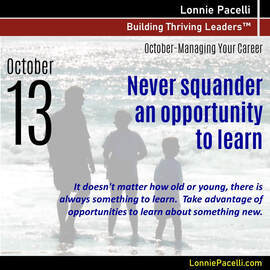 In Part 1 of Driving Decisions, I talked about my experience as president of our homeowners association and the parallels between being president and being a PM when it comes to driving decisions. I introduced the first five factors to driving decisions: Be clear on what “done” looks like.
In Part 1 of Driving Decisions, I talked about my experience as president of our homeowners association and the parallels between being president and being a PM when it comes to driving decisions. I introduced the first five factors to driving decisions: Be clear on what “done” looks like.Be specific on who owns driving the decision.Decide who needs to be involved in the decision versus who needs to be consulted or informed.Set the guiding principles.Establish whether you need a best or least-worst alternative.
What follows are the remaining factors to round out the 12:
Read more at ProjectManagement.com.
Published on October 26, 2024 02:33
October 19, 2024
12 Tips for Driving Decisions (Part 1)
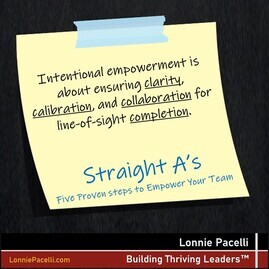 I recently had an epiphany about what four decades of leadership and project management experience has finally prepared me to do: I am now the president of our homeowners association.
I recently had an epiphany about what four decades of leadership and project management experience has finally prepared me to do: I am now the president of our homeowners association.A bit on our HOA its board of directors: The board is comprised of seven homeowners who are elected to a three-year term. Four are officers (president, vice-president, secretary and treasurer), and three are directors. I have served on the board in years past as the treasurer, but this is my first tour of duty as president.
We represent 24 homeowners, mostly in the 50+ age range. Many of the homeowners have winter homes elsewhere to escape the rainy months in the Pacific Northwest. It's a beautiful community, and by and large everyone gets along just fine. But there certainly are some disagreements—not only among homeowners, but between homeowners and the board; among the board; and between the board and external entities such as the city government.
The disagreements can range from a homeowner objecting to a neighbor smoking tobacco (or other substance) on their balcony and a homeowner not complying with our rules and regulations, to major issues with the city or significant third-party providers like our fire alarm monitoring company.
Most all of the disagreements land on the steps of the board, which is accountable for driving resolution. I liken some of the issues to working in a hospital emergency room; you never quite know when the next injury is going to be wheeled in.
Read more at ProjectManagement.com.
Published on October 19, 2024 02:34
October 9, 2024
12 Practical Tips to Effective Hybrid Execution
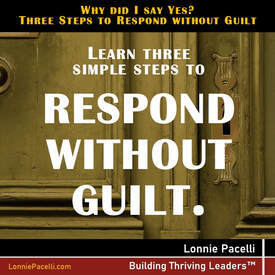 The waterfall purists typically crave structure, with a clear understanding of scope, schedule and budget before commitment and adherence to scope, schedule and budget through delivery.
The waterfall purists typically crave structure, with a clear understanding of scope, schedule and budget before commitment and adherence to scope, schedule and budget through delivery.The agile purists typically crave nimbleness, with rolling waves of smaller logical work groupings and more frequent delivery. I’ve seen discussions on the topic devolve into shouting matches as to which methodology is the “right” one.
In my experience, project managers generally prefer waterfall while engineers prefer agile. PMI has developed the Disciplined Agile® framework, which sandwiches three hybrid levels between the waterfall and agile anchors.
While I think some of my agile purist friends might take exception to the Disciplined Agile® name (as if agile is an undisciplined framework), the way of working spectrum is a reasonable split-the-wickets acknowledgement that there can be peaceful coexistence between agile and waterfall.
Now I’ve been doing this stuff for four decades, and have seen projects from just about every vantage point performing just about every role in my career. I am actually a fan of a hybrid methodology and have successfully blended components of agile and waterfall in delivering very high-visibility initiatives.
In doing so, I’ve learned and implemented some tips that have helped me drive hybrid initiatives, as follows:
Read more at ProjectManagement.com.
Published on October 09, 2024 02:36
October 4, 2024
6 Benefits of Understanding Your Stakeholders’ Values
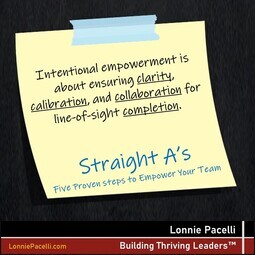 In Part 1 of The 4 Building Blocks of Emotional Intelligence (EI), I focus on knowing thyself. A key aspect of knowing thyself is developing an action plan based on improvement opportunities identified from a 360-feedback evaluation. The nuggets you get from a 360 are crucial in helping you become a better-rounded PM.
In Part 1 of The 4 Building Blocks of Emotional Intelligence (EI), I focus on knowing thyself. A key aspect of knowing thyself is developing an action plan based on improvement opportunities identified from a 360-feedback evaluation. The nuggets you get from a 360 are crucial in helping you become a better-rounded PM.There is another great source to help you in your learning journey: your stakeholder’s values. Before we get in too deep, here is a level-set of who I include in the stakeholder universe:
Read more at ProjectManagement.com.
Published on October 04, 2024 02:25
September 27, 2024
Free 10/1-2: 15 Tips to Keep Your Business on Track
 Free 10/1-2: 15 Tips to Keep Your Business on Track
Free 10/1-2: 15 Tips to Keep Your Business on TrackGet it at https://amzn.to/2FxF3L0
#freebook #teamwork #leadership #kindle #kindlefire #ebooks #ebook #Kindlefreebooks #Kindledeals #FREE #mustread #goodreads #greatreads #freebie #freebies #kindlebook #ad #entrepreneur #startup
Published on September 27, 2024 02:41
Are You a Job Hopper or a Company Hopper?
 I worked for three companies in my professional career: Accenture, Microsoft, and my own company, Consetta Group.
I worked for three companies in my professional career: Accenture, Microsoft, and my own company, Consetta Group.In my 11 years at Accenture, I worked on gigs in the oil & gas, food distribution, technology, retail distribution, aerospace & defense, software product management, and outsourcing industries. At Microsoft I worked in IT, corporate procurement, corporate planning, and HR over a nine-year span. I not only got a rich education in different industries and functions, but was able to go deeper in areas I liked.
And it all largely happened despite my lack of planning.
Particularly in my career at Accenture, I mostly took the gigs that were given to me. I really had no idea what skills I wanted to build or industries I wanted to work in. What my experience at Accenture imprinted on me was to stay in a job for about 18 months then look for my next opportunity.
This continued at Microsoft as well as my own consultancy. After about 18 months I would get bored and need a change. Even to this day, I occasionally get an itch to do something different and new.
I’ve looked at a lot of LinkedIn profiles over the past several years. My first inclination is to go to the experience section and see not just where people have worked, but how many companies and how long they worked at each company. This review provides first impressions for me:
Read more at ProjectManagement.com.
Published on September 27, 2024 02:41
September 21, 2024
11 Ways to Create a Negative Perception on LinkedIn
 LinkedIn is the standard for introducing you to the world and enabling you to put your best foot forward in your chosen profession. According to LinkedIn’s pressroom:There are more than one billion members in 200 countries and regions worldwide.Seven people are hired every minute on LinkedIn.9,000 members apply for a job every minute.1.5 million feed updates are viewed per minute.138 hours of learning content is consumed every minute.67 million companies are on LinkedIn.
LinkedIn is the standard for introducing you to the world and enabling you to put your best foot forward in your chosen profession. According to LinkedIn’s pressroom:There are more than one billion members in 200 countries and regions worldwide.Seven people are hired every minute on LinkedIn.9,000 members apply for a job every minute.1.5 million feed updates are viewed per minute.138 hours of learning content is consumed every minute.67 million companies are on LinkedIn.When used well, it can lead to fruitful long-term relationships. When used poorly, it can lock a door to an opportunity you may never even know about. Given that it can be used for free, it’s a no-brainer to use LinkedIn.
But merely putting up a profile may not be enough. I’ve seen many LinkedIn profiles that not only don’t make me more interested in a person, but they actually leave me with a negative perception of them. To that end, here are 11 lessons that might be helpful for you to avoid when creating a profile and using LinkedIn (or any other platform):
Read more at ProjectManagement.com.
Published on September 21, 2024 02:25
September 11, 2024
How to Succeed Under an Insecure Leader
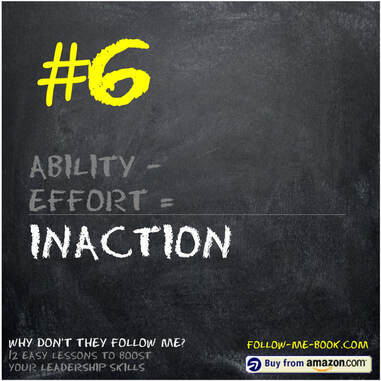 In Part 1: Ten Differences Between a Secure and an Insecure Leader, I contrasted ten key attributes that distinguish a secure leader from one who is insecure in his or her abilities. Part 2 is dedicated to giving you eight nuggets to help you succeed under an insecure leader.
In Part 1: Ten Differences Between a Secure and an Insecure Leader, I contrasted ten key attributes that distinguish a secure leader from one who is insecure in his or her abilities. Part 2 is dedicated to giving you eight nuggets to help you succeed under an insecure leader. For years I was an insecure leader. My greatest fear in leading others was that I would be "found out" and that everyone would see me not as a strong, competent leader but as a bumbling fool. Through the years I've learned that the quest for infallibility is impossible to reach and that making mistakes is part of the growth process. I'm less insecure today because I am more comfortable saying "I don't know" without everyone in the room thinking I'm an incompetent twit. Having said that, I am secure in knowing I will continue to screw up until my Maker calls me home.For an insecure leader, it all comes down to trust. Insecure leaders are by default distrustful of others and will only let those into their inner circle after trust has been earned. You could be the best performer in the leader's organization but if he or she doesn't trust you then you're always going to be operating on the fringes with the leader and will likely have a stressful relationship. Unfortunate, yes; but that's the fact Jack. You need to accept and embrace it.
So okay, you've accepted and embraced the fact you work with an insecure leader. What next? Here are eight specific things to consider in better securing a good working relationship with the leader:
Respect the leader's position - Regardless how smart or competent you feel your leader is, the first step to a healthy relationship with an insecure leader is respecting his or her position as leader. To an insecure leader, disrespect for the position is no different than disrespect for the leader.
Don't overdraw in the feedback bank account - Insecure leaders need to hear that they are doing some things right. When presenting feedback to the leader, start things off with something positive before raising constructive feedback. The spoonful of sugar will truly help the medicine go down better for the leader.
Don't dump problems - If you have a difficult issue you need help with don't dump it on the leader's doorstep. Clearly articulate the issue and present some alternatives to how you and the leader can resolve the problem together. Dumping the problem can put insecure leaders on edge because they may now feel as if they are being tested.
Criticize in private - Publicly criticizing or embarrassing an insecure leader puts the leader in a "fight or flight" situation and can severely damage your relationship with the leader. Save the negative feedback for a private session.
Don't suck up - A savvy leader will see sucking up as insincere. In addition, other team members will resent you if you are viewed as a brown-noser in it for personal gain.
Allow the leader to teach - Being insecure doesn't necessarily mean the leader is incompetent. Find something you can learn from the leader and become a student of the leader's viewpoint. Being less than open to learning something from the leader may suggest a problem with your attitude versus purely a problem with the leader.
Understand the leader's communication style - Some leaders truly are "open door" while others prefer scheduled appointments. Some prefer verbal discussion while others like written emails. Understand how the leader likes to communicate and stick to his or her style. Also beware of the leader who says the politically-correct "my door is always open" but seems annoyed if someone barges in. Keep your ear to the railroad track and understand how the leader truly likes to communicate.
Don't compromise your principles and values - learning how to work with an insecure leader doesn't mean blindly following whatever the leader asks you to do. If an insecure leader asks you to do something against your principles be very clear in articulating your objection and why you are objecting.
My one nugget to you is this: recognize you work for an insecure leader, embrace it, and decide you're going to make the best of the situation. It will not only yield a better working relationship with your leader, it will also reduce your stress level.
Lonnie Pacelli
Keynote Speaker | Board Director | Autism Advocate | Author | Project Management Expert | Microsoft/Accenture Veteran
See his books on Amazon.
Published on September 11, 2024 02:31
September 7, 2024
How to Flex Your Quadrant II Muscle
 Way back when I was with Andersen Consulting (now Accenture), our senior management became very interested in Stephen Covey’s book
The 7 Habits of Highly Effective People
. Every partner and manager attended an intensive five-day seminar on the seven habits and how to practically implement them into our daily lives.
Way back when I was with Andersen Consulting (now Accenture), our senior management became very interested in Stephen Covey’s book
The 7 Habits of Highly Effective People
. Every partner and manager attended an intensive five-day seminar on the seven habits and how to practically implement them into our daily lives.Now, I have attended many seminars that I honestly got nothing out of. Not this one. This was when I experienced my first 360 evaluation. It was also during this seminar that one of the key concepts left a lasting impression: Habit 3, “Put first things first.” In this habit, Covey introduces the four quadrants of time management, as follows:
Read more at ProjectManagement.com.
Published on September 07, 2024 02:29
August 31, 2024
Free 9/3-4: 14 Tips to Unify Your Team to Drive Results
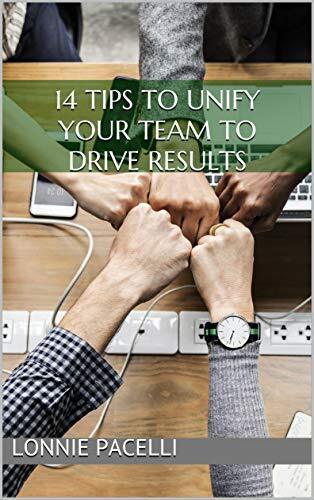 Free 9/3-4: 14 Tips to Unify Your Team to Drive Results
Free 9/3-4: 14 Tips to Unify Your Team to Drive ResultsGet it at https://amzn.to/2ToVs7r
#freebook #teamwork #leadership #kindle #kindlefire #ebooks #ebook #Kindlefreebooks #Kindledeals #FREE #mustread #goodreads #greatreads #freebie #freebies #kindlebook #teamwork #leadership #followership #planning
Published on August 31, 2024 02:25



